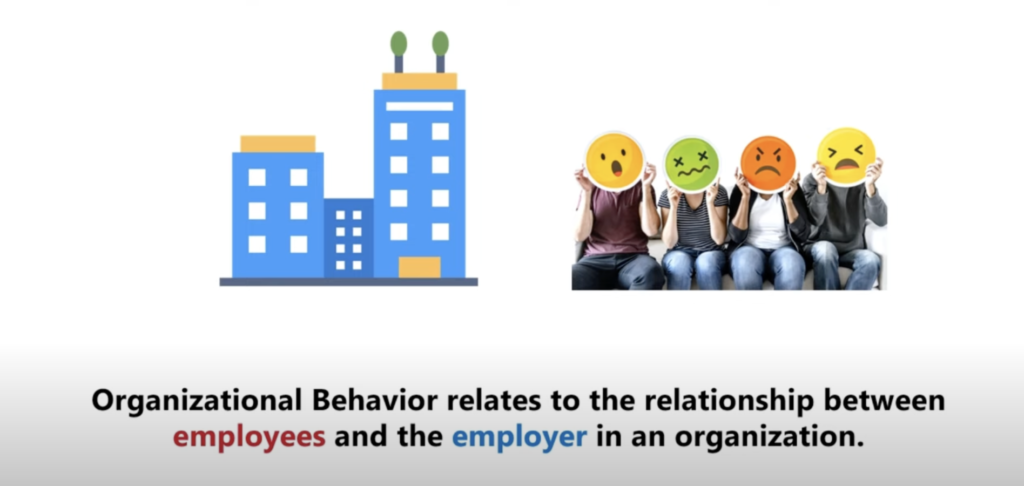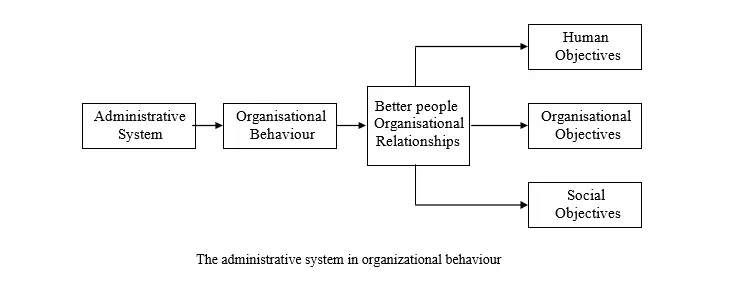Table of Contents
In this article, you’ll learn about approaches to Organizational Behaviour. Studying approaches to organizational behavior is valuable for several reasons, as it provides insights into understanding, managing, and improving the dynamics within an organization.
Organizational Behavior relates to the relationship between employees and the employer in an organization.

Both are working towards the realization of the goals and objectives of any organization, and a close and fruitful coordination between the two is one of the major factors towards this realization.
Organizational behavior approaches are a result of the research done by experts in this field.
There are 5 Approaches to Organizational Behaviour
1. Human resources (supportive) approach
The human resources approach is developmental. It is concerned with the growth and development of people towards higher levels of competency, creativity, and fulfillment because people are the central resource in any organisation and any society. The nature of the human resources approach can be understood by comparing it with the traditional management approach in the early 1900s.
In the traditional approach, managers decided what should be done and management was directive and controlling. The human resources approach, on the other hand, is supportive. It helps employees become better, more responsible persons and then tries to create a climate in which they may contribute to the limits of their improved abilities. Essentially, the human resources approach means that better people achieve better results.
Give a person a fish, and you feed that person for a day, Teach a person to fish, and you feed that person for life.
2. Contingency approach
Traditional management relied on the principle of ―one best way of managing. There was a correct way to organize, delegate, and divide work. The correct way is applied regardless of the type of organisation or situation involved. The contingency approach to organizational behaviour means that different situations require different behavioural practices for effectiveness.
No longer is there a one best way. Each situation must be analysed carefully to determine the significant variables that exist in order to establish the kinds of practices that will be more effective. The strength of the contingency approach is that it encourages analysis of each situation prior to action, while at the same time discouraging habitual practice based on Universal assumptions about people.
The contingency approach also is more interdisciplinary, more system oriented, and more research-oriented than the traditional approach. Thus it helps to use in the most appropriate manner all the current knowledge about people in organisations.
3. Productivity approach
Productivity is a ratio that compares units of output with units of input. If more outputs can be produced from the same amount of inputs, productivity is improved or if fewer inputs can be used to produce the same amount of outputs, productivity has increased.
The idea of productivity does not imply that one should produce more output; rather it is a measure of how efficiently one produces whatever output is desired. Consequently, better productivity is a valuable measure of how well resources are used in society. It means that less is consumed to produce each unit of output. There is less waste and better conservation of resources.
Productivity often is measured in terms of economic inputs and outputs, but human and social inputs and outputs are also important, For example. if better organizational behaviour can improve job satisfaction, a human output or benefit occurs. In the same manner, when employee development programmes lead to a by-product of better citizens in a community, a valuable social output occurs.
Equations showing the role of organizational behaviour is work systems
Knowledge X skill = Ability
Attitude X situation = Motivation
Ability X Motivation = Potential human performance
Human performance X Resources = Organizational productivity
4. Systems Approach
A system implies that there are many variables in organisations and that each of them affects all the others in a complex relationship. All people in organisations should be concerned with improving organizational behaviour. Managers represent the administrative system and their role is to use organizational behaviour to improve people – organisation relationships as shown in the following figure.
Managers try to build a climate in which people are motivated work together, productively, and become more effective persons.

When organizational behaviour is applied with a systems approach it creates a triple reward system in which human, organizational and social objectives are met. People find more satisfaction in work when there is cooperation and teamwork. They are learning to grow and contribute. The organization also is more successful, because it operates more effectively.
Quality is better and costs are less. Perhaps the greatest beneficiary of the triple reward system is society itself; because it has better products and services, better citizens and a climate of co-operation and progress.
5. Interdisciplinary Approach
This approach advocates that efficiency can be attained by finding the right methods to get the job done through specialization on the job by planning and scheduling, by using standard operating mechanisms, establishing standard time to do the job, by proper selection and training of personnel and through wage incentives.
